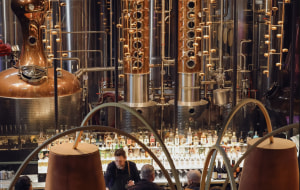Market intelligence company Mintel has released data on three key trends that are changing the face of packaging.
Mintel’s trend and innovation consultant Laura Jones regularly produces category-specific reports for the ANZ markets.
She and the Mintel team have identified key trends which are impacting packaging design: clarity on pack; experience; functionality; and a shift towards green packaging.
1. Clarity on pack
According to Jones, consumers are seeking more product information on pack than ever before.
“With many people cutting out allergens, they are seeking information on what ingredients products contain,” she says.
“It’s important for brands to ‘say it loud’ and explain the pack’s contents in such a way that they can understand the technical ingredients used.”
Mintel found that 20 per cent of Australians are now avoiding – or intending to avoid – carbohydrates; 11 per cent are avoiding gluten; and nine per cent are avoiding dairy.
This translates to a need for gluten- and dairy-free claims on pack.
More brands are looking at ways to promote their products’ low-sugar and low-salt status, with more consumers cutting down on these additives also.
As a result, the shift towards clean labelling is gathering steam, and mandatory labelling is helping consumers make better dietary decisions.
More packaging designs are championing the real, wholefood ingredients inside, with some even bringing the ingredients list to the front of pack.

There has also been a move to use more specific symbols on pack which communicate dietary information such as ‘Paleo’ or ‘Organic’.
The need for information about food origin is also growing in importance – especially in light of such incidents as the Patties frozen berry scare.
According to Mintel, 38 per cent of consumers prefer to buy products made using sustainable sourcing methods, and 36 per cent will buy one product over another is it’s locally made or grown.
The Coles’ Future Friendly Sourcing Program is one initiative which responds to consumer demand for information, and the rise in QR codes that prove the product is contaminant-free, as well as NFC technology on spirits and wine packs reflect concerns.
Companies are also taking it upon themselves to create their own statements about the ‘health ratings’ of their products.
Mars Food UK, for example, sought to educate consumers about whether their brands are ‘everyday’ or ‘occasional’ foods in a recent launch.
2. Experience is everything.
In an attempt to create excitement, more brands are seeking inspiration outside their category and drawing inspiration from other packaging types and designs, whether it’s a perfume bottle that looks like a spray pump or a dairy-based drink that uses high-end artwork on its label.
Also big within the experience trend are thermochromatic inks which indicate when drinks are chilled and ready to consume, and thermochromatic coatings which warm the hands, such as those used in the Naked skincare range by Neretin.
And personalisation is paramount in the use of a complimentary charcoal pencil supplied with Terravant Wine Company’s latest products, which enables the consumer to draw on the wine label and share their designs via social media.
There are even biodegradable cups that can be eaten – a boon for time-poor consumers on-the-go. Some packaging can be open, eaten, and disposed of with one hand.
There has also been a shift towards single-serve packaging which helps minimise waste.
New Zealand brand Blue Coconut, for example, launched a product offering single-serve sachets of coconut oil recently.

Sizes have also been reduced in many categories, with Magnum and Ben and Jerry’s taking the lead with size changes in the ice cream category.
Sometimes too, the container becomes a dispensing mechanism, such as McCormick’s fresh basil-in-a-grinder.
3. Green packaging.
In the Asia Pacific region, eco-packages are a growing trend, with a growing focus on reducing packaging materials.
For example, Kellogg’s in the US (check) has done away with its cardboard outer layer and is using just the bag for its cereal packaging.
In another attempt to reduce waste, supermarkets are encouraging customers to bring their own serving vessels when using weigh-and-pay in-store dispensers.
There has also been a wave of alternative packaging such as edible packaging made from milk proteins whereby the whole pod can be dropped into a cup of coffee and consumed.






